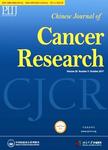Expression of Gli1 in the hedgehog signaling pathway and breast cancer recurrence
Expression of Gli1 in the hedgehog signaling pathway and breast cancer recurrence作者机构:Cancer Therapy Evaluation Program Bioinformatics Research Branch National Clinical Target Validation LaboratoryDivision of Cancer Treatment and DiagnosisNational Cancer InstituteNational Institutes of HealthUSA
出 版 物:《Chinese Journal of Cancer Research》 (中国癌症研究(英文版))
年 卷 期:2012年第24卷第4期
页 面:257-258页
核心收录:
学科分类:1002[医学-临床医学] 100214[医学-肿瘤学] 10[医学]
主 题:cell Expression of Gli1 in the hedgehog signaling pathway and breast cancer recurrence
摘 要:The hedgehog (Hh) signaling pathway plays an essential role in the embryonic development and homeostasis of diverse adult tissues, and its deregulation has been implicated in the tumorigenesis and metastasis of various malignancies including breast cancer. Aberrant activation of the Hh pathway includes the following mechanisms: (I) Hh ligand-independent mechanism - Loss of function mutations in the Hh receptor Patched 1 (PTCH1) or gain of function mutations in the Smoothened (SMO) lead to constitutive activation of this pathway; (II) Autocrine signaling- Ith ligand produced by tumor cells stimulates the Hh signaling in tumor cells; (III) Paracrine signaling - tumor cell produced-Hh ligand activates stromal and endothelial cells that produce growth factors in microenvironment for supporting tumor growth and survival; and (IV) Reverse paracrine signaling - Hh ligand produced by stromal cells support tumor growth and survival. Upon the pathway activation, the Gli transcription factors, effectors of the Hh signaling, activate or inhibit transcription by binding to their responsive genes and interacting with the transcriptional complex. The Gli transcription factor family includes Glil, Gli2, and Gli3 (1). Glil is a transcriptional activator whose expression has been recognized as an activation state of the Hh signaling pathway, Gli2 is either an activator or repressor, and Gli3 is a strong repressor of transcriptional activities. To date, a ligand-dependent autocrine model of activating the Hh signaling has been described in breast cancer, and both an autocrine and paracrine mechanisms in colorectal cancer, pancreatic cancer and prostate cancer (2,3). Notably, a ligand-independent mechanism (mutationsin PTCHI and SMO) of the signaling has been well demonstrated in basal cell carcinoma and medulloblastoma (4,5).



